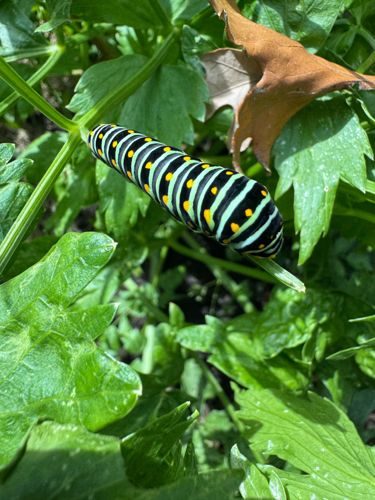Black Swallowtail Caterpillar
Scientific Name: Papilio polyxenes
Order & Family: Lepidoptera, Papilionidae
Size: 2-3 inches (5-7.5 cm) in length as a mature caterpillar

Natural Habitat
Gardens, meadows, fields, and open woodlands where host plants (Apiaceae family) are present. They are commonly found in North and South America.
Diet & Feeding
The caterpillars are herbivorous, feeding on plants in the Apiaceae (umbellifer) family, including dill, parsley, fennel, carrots, and Queen Anne's Lace. Adult butterflies feed on nectar from various flowers.
Behavior Patterns
The caterpillars are typically solitary feeders. When disturbed, they can evert an orange, Y-shaped organ called an osmeterium from behind their head, which releases a foul-smelling substance to deter predators. They undergo complete metamorphosis, forming a chrysalis before emerging as a Black Swallowtail butterfly. The adult butterflies are active during the day.
Risks & Benefits
Potential risks to gardeners include defoliation of host plants, especially dill and parsley in vegetable gardens. However, they are beneficial as pollinators in their adult stage. The caterpillars themselves are harmless to humans, and their presence indicates a healthy ecosystem. The adult butterflies are aesthetically pleasing and contribute to the beauty of natural environments.
Identified on: 9/24/2025